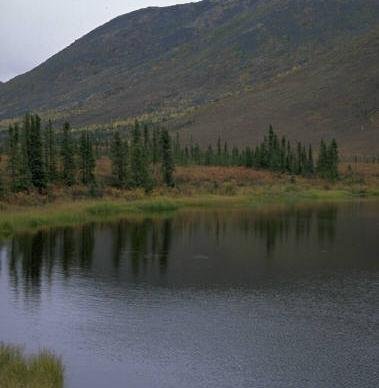Dive Sites
When people think of diving, they usually envision the warm and pristine waters of the tropics or the majestic kelp forests of California. For most people, these locations require significant travel, planning, and expenses.
Chances are, you're taking this course in preparation for a trip you've planned or are anticipating. But diving isn't limited to exotic locations. Chances are, there's a body of water near where you live, and where there's water, there's also an opportunity to dive.
In this lesson, you'll learn about the various sites people dive, what makes them special, and special precautions you must take when diving these sites.
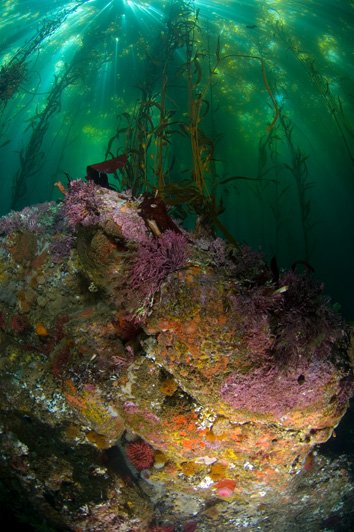
Coral Reefs
Coral reefs are located in the Caribbean, the Florida Keys, Hawaii, South Pacific, Australia, the Red Sea, and many other tropical locations. Warm water, clear visibility, abundance of color, and beautiful marine life make these locations some of the most popular destinations in the world.
When diving coral reefs, you'll likely see colorful reef fish, various rays, reef sharks, and eels. This of course is in addition to the various species of living corals that make up the reef itself.
Visibility in the tropics can exceed 100 feet, and is rarely less than 75 feet. While this makes navigation an easier task, it also makes it difficult to judge your depth since it doesn't get dark as you descend. For this reason, it's important to watch your depth to make sure you don't exceed the maximum depth you planned.
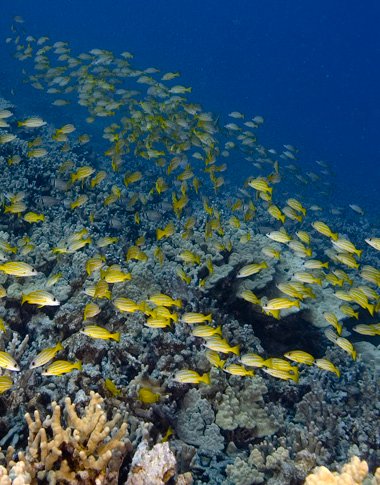
Divers in coral reefs must exercise proper buoyancy control to avoid damaging the fragile growths of coral. Some of these growths are hundreds of years old, and are easily damaged or killed by even the slightest touch.
Another reason to avoid contact with the corals is the potential injury they may inflict on the diver. Corals hunt by injecting stinging cells into their prey. Most of these stings aren't powerful enough to be felt by humans, but a few species are capable of inflicting painful stings that require medical attention. Additionally, most hard corals are sharp, and can cut or scrape the skin.

Kelp Forests
Kelp forests are often described as an underwater forest. Giant kelp grows as fast as 2 feet a day and can reach the surface from depths of 70 feet or more. Once it reaches the surface, it continues to grow and form a thick canopy that shades the area beneath it. As light penetrates this canopy, spectacular rays of light extend from the surface all the way to the bottom. This is a sight that every diver should experience.
Giant kelp only grows in cold water, and is most common off the coast of California. Water temperatures in this region range from 50° F to 65° F, so appropriate thermal protection makes the difference between a remarkable experience and miserable one. Most divers wear a 2-piece 7mm wetsuit or a dry suit, in addition to neoprene gloves and a hood.
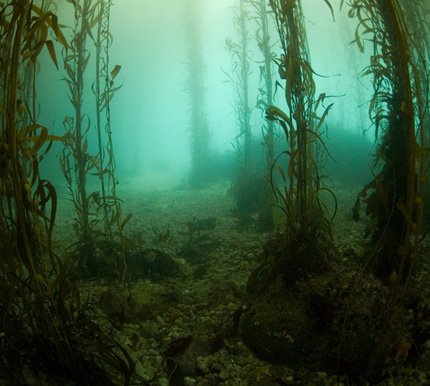
Visibility in a kelp forest averages 25 to 45 feet, but can be as low as 5 feet or as high as 100 feet depending on weather and other conditions. Fortunately, high visibility is not always necessary to appreciate these areas because they are rich with stationary and slow moving invertebrates such as anemones, sponges, and starfish.
Entanglements are a significant hazard when diving in kelp, which easily catches fin straps and cylinder valves. The most appropriate response is to locate and free the entanglement. But if necessary, you can break it by bending its stalk until it snaps, or cutting it with your dive knife.

Rocky Reefs
Even if you're diving in an environment where corals or kelp do not flourish, you're likely to have an exciting dive anywhere there are rocky reefs. Rocks are often covered by colorful sponges, anemones, and other invertebrates.
Don't overlook the small cracks and crevices, which are common homes to octopus, eels, lobsters, and other fascinating creatures.
The waters above rocks are home to a variety of fishes that feed on the smaller inhabitants of the reef, so be sure to observe the area above you. And don't forget the patches of sand nearby, where interesting sand dwellers hide from their predators.
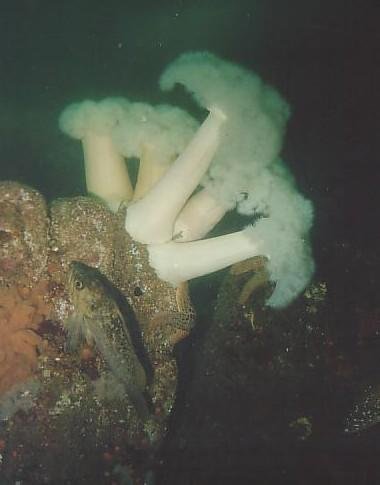
Wharfs & Piers
If you're looking for a unique experience, don't forget wharves and other man-made structures. These are magnets for exciting life such as marine mammals, fishes, and invertebrates.
Not all wharves are suitable for diving. Heavy surf, low visibility, rusted debris, or unstable pilings can make diving unsafe. Another common hazard is fishing line, which can be difficult to see underwater and even more difficult to untangle.
Before diving a wharf or any other man-made structure, you should check local regulations. Diving is prohibited at some locations, and others require that you inform the wharf staff prior to entering. If these regulations exist, it's usually because hazards exist, and local officials are looking out for your safety.
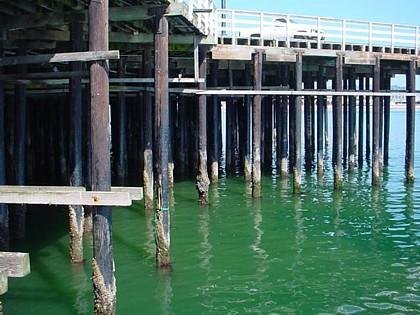
Shipwrecks
Shipwrecks offer some of the best diving available. Whether sunk as the result of an unfortunate accident or intentionally to form an artificial reef, they soon become a haven for a variety of organisms looking for a new home.
Wreck diving can be divided into two categories: external survey and penetration. External survey involves exploring the exterior of the wreck. As an entry-level diver, this is the only form of wreck diving you should attempt.
Penetration diving requires additional training and equipment because it involves diving underneath an overhead environment with no direct access to the surface. Divers who are trained for this type of diving do so with navigation lines for finding their way out of the wreck, and redundant air supplies to use in the event they run low on air.

Lakes
If you don't live near the ocean, you don't have to wait for your next tropical vacation to exercise your scuba skills. You can dive almost anywhere there is water, and this includes lakes, reservoirs, and quarries.
You should check with your local dive shop to see if any nearby fresh water bodies are suitable for diving. In recent years, several "dive parks" have opened that offer fresh water diving complete with sunken attractions such as airplanes, cars, and boats.
Lake temperatures change dramatically with the seasons. During summer months, temperatures may rival those of tropical waters, but as winter nears, the same lake may drop to a bone chilling 45° F.
Visibility in lakes varies from zero to over 60 feet. The best visibility is found in lakes or quarries with rocky bottoms, while the worst is found in lakes with muddy or silty bottoms.

Before diving a lake, be sure to check the local altitude to make sure it doesn't require modifications to your dive tables. As you learned during Chapter 6, standard dive tables only apply up to altitudes of 1000 feet, and dives at higher altitudes require special tables or a compensating dive computer. An altitude diving specialty course covers modifications to your tables, and should be completed before you attempt high altitude dives.
If you normally dive in the ocean, be aware that fresh water is less dense than salt water, so you'll need to remove weight from your weight belt when diving a lake. For most divers, removing an amount of weight equal to 2.5% of their total weight, including all equipment, is a sufficient adjustment.
